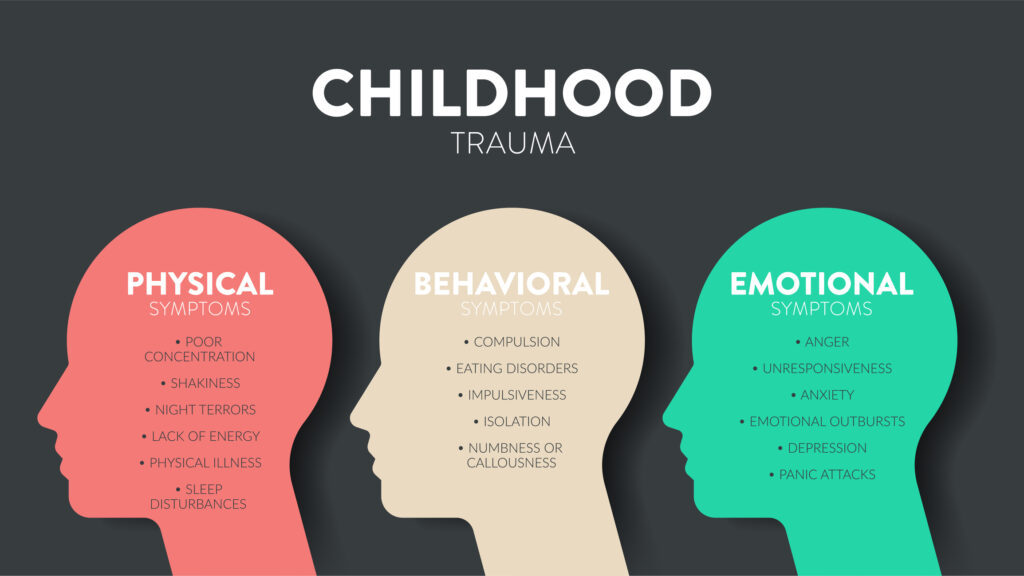Introducing Compassionate Communication in Foster Care
As foster carers, we face a unique challenge: understanding and responding to the complex emotional and behavioural expressions of children who have experienced trauma. Our language shapes how we perceive and interact with the young people in our care. By adopting a trauma-informed approach to communication, we can build stronger connections, promote healing, and better support our children’s developmental journeys.
In this guide, we’ll explore the principles of compassionate language, delve into the impact of trauma-informed terminology, and offer practical strategies for fostering understanding and trust within your family.
Foundation: The Language of Compassion
What is Trauma-Informed Language?
Trauma-informed language is a way of communicating that acknowledges the impact of trauma on behaviour and emphasises empathy, understanding, and support. It’s about recognising that behaviours often seen as “difficult” or “challenging” may be stress responses or adaptive strategies developed in response to prior experiences.
Why Language Matters
Language shapes our perceptions and attitudes. The words we choose can influence our relationships with foster children, impacting their sense of safety and trust. Using compassionate, non-judgmental language fosters an environment where children feel understood and valued.
Challenges for Foster Children
Children in foster care often come with histories marked by instability, loss, and trauma. These experiences can manifest in behaviours that are sometimes misunderstood. As carers, reframing these behaviours not as deliberate mischief but as expressions of underlying emotional needs is crucial.
The Role of Foster Carers
Our role is to create a supportive environment where children can express their needs safely. This involves shifting our perspective from managing behaviour to understanding and supporting developmental goals.
Importance: Effects of Language on Development
Effects of Problematic Language
Describing a child as “difficult” or “troublesome” risks cementing negative perceptions in both the child and ourselves. This can limit opportunities for positive connection and growth and may exacerbate the child’s feelings of alienation or unworthiness.
The Role of Compassionate Communication
Using trauma-informed language encourages empathy. It helps children feel seen beyond their behaviours and provides the emotional safety necessary for healing. For instance, framing an “emotional outburst” as an “emotional expression” highlights the child’s communication effort, not simply the behaviour.
Long-Term Benefits
Consistently using compassionate language can have profound effects on children’s development. When children feel understood and supported, they are more likely to build secure attachments, develop emotional regulation skills, and trust in their environment and carers.
Practical Strategies
Let’s explore some practical strategies for integrating trauma-informed language into your daily interactions:
Strategy 1: Reframe Problematic Descriptions
– Instead of: “Tommy is being difficult again.”
– Use: “Tommy is finding it hard to express his needs right now.”
Strategy 2: Describe Experiences, Not People
– Instead of: Jenny is aggressive.”
– Use: “Jenny is reacting to overwhelming feelings with a protective response.”
Strategy 3: Recognise Adaptation, Not Deficit
– Instead of: “Mark is attention-seeking.”
– Use: “Mark is signalling that he needs a connection.”
Adapting Strategies for Different Children
Children are unique, and so are their responses. Tailor your language shifts based on each child’s experiences and needs. The key is to remain flexible and patient, knowing that building trust takes time.
Advanced Applications: Professional Collaboration
Understanding Complex Needs
In some cases, behaviours might seem particularly complex. Collaborating with professionals who understand trauma can provide additional insights and support. Asking questions like, “How is this behaviour speaking for the child?” can guide these discussions.
Applying Techniques in Foster Care
Join workshops or professional learning communities that focus on trauma-informed care. Sharing experiences with peers can offer new perspectives and strategies that may be particularly effective for your family.
Seeking Professional Help When Needed
Knowing when to seek additional support is crucial. Changes in language can help significantly, but sometimes, more structured interventions might be necessary to fully support a child. Don’t hesitate to seek professional advice if you’re unsure.
Signs of Progress
Look for small but significant changes, like improved emotional expression or asking for help more frequently. These are signs that your new communication approach is helping.
When Strategies Need Adjusting
If a strategy is ineffective, consider revisiting your approach or discussing it with other foster carers or professionals. Sometimes, a different perspective can unveil new possibilities.
Celebrating Small Wins
Every small step forward is a victory in the world of foster care. Acknowledge these wins with your child, reinforcing their efforts and resilience.
Conclusion: Building a Foundation of Understanding
Adopting trauma-informed language is a journey of patience, empathy, and learning. By choosing words that build understanding rather than judgment, we’re not just improving our communication skills but nurturing an environment where healing and development can flourish. Your role as a foster carer is vital, and your thoughtful, compassionate approach makes a world of difference in a child’s life.
Remember, we’re all in this together. If you’d like to share experiences or questions, please comment below. Let’s continue to learn and grow as carers, supporting each other as we positively impact the children in our care.


